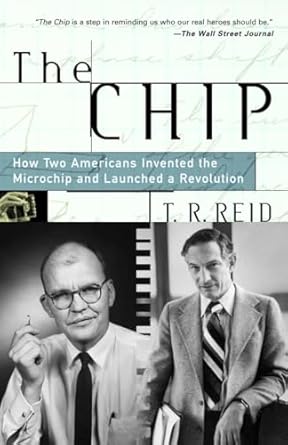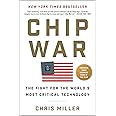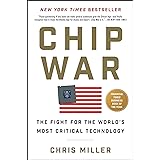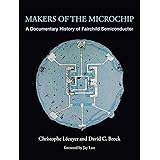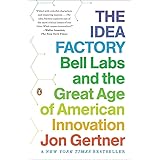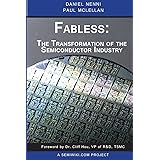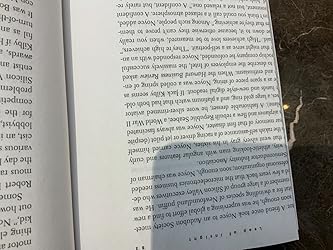
Enjoy fast, free delivery, exclusive deals, and award-winning movies & TV shows with Prime
Try Prime
and start saving today with fast, free delivery
Amazon Prime includes:
Fast, FREE Delivery is available to Prime members. To join, select "Try Amazon Prime and start saving today with Fast, FREE Delivery" below the Add to Cart button.
Amazon Prime members enjoy:- Cardmembers earn 5% Back at Amazon.com with a Prime Credit Card.
- Unlimited Free Two-Day Delivery
- Streaming of thousands of movies and TV shows with limited ads on Prime Video.
- A Kindle book to borrow for free each month - with no due dates
- Listen to over 2 million songs and hundreds of playlists
- Unlimited photo storage with anywhere access
Important: Your credit card will NOT be charged when you start your free trial or if you cancel during the trial period. If you're happy with Amazon Prime, do nothing. At the end of the free trial, your membership will automatically upgrade to a monthly membership.
Buy new:
$18.00$18.00
Ships from: Amazon.com Sold by: Amazon.com
Save with Used - Good
$9.41$9.41
Ships from: Amazon Sold by: Zoom Books Company





Download the free Kindle app and start reading Kindle books instantly on your smartphone, tablet, or computer - no Kindle device required.
Read instantly on your browser with Kindle for Web.
Using your mobile phone camera - scan the code below and download the Kindle app.

OK
 Audible sample Sample
Audible sample Sample 


The Chip : How Two Americans Invented the Microchip and Launched a Revolution Paperback – October 9, 2001
Purchase options and add-ons
- Print length336 pages
- LanguageEnglish
- PublisherRandom House Trade Paperbacks
- Publication dateOctober 9, 2001
- Dimensions5.2 x 0.72 x 7.91 inches
- ISBN-100375758283
- ISBN-13978-0375758287
The Amazon Book Review
Book recommendations, author interviews, editors' picks, and more. Read it now.
Frequently bought together

Similar items that may deliver to you quickly
Editorial Reviews
Amazon.com Review
Satisfying as both biography and basic science text, the book perfectly captures the independence and near-obsessive problem-solving talents of the two men. Though ultimately only one of them (Noyce) ended up with legal rights to the invention, they shared a respect for each other that persisted throughout their careers. Since Kilby won the 2000 Nobel Prize for Physics for his work, the story is all the more compelling and intriguing over 40 years after the invention. Reid's work uncovers human dimensions we'd never expect to see from 1950s engineering research. --Rob Lightner
From Publishers Weekly
Copyright 2001 Cahners Business Information, Inc.
From Booklist
Copyright © American Library Association. All rights reserved
From the Back Cover
About the Author
Excerpt. © Reprinted by permission. All rights reserved.
THE MONOLITHIC IDEA
The idea occurred to Jack Kilby at the height of summer, when everyone else was on vacation and he had the lab to himself. It was an idea, as events would prove, of literally cosmic dimensions, an idea that would be honored in the textbooks with a name of its own: the monolithic idea. The idea would eventually win Kilby the Nobel Prize in Physics. This was slightly anomalous, because Jack had no training whatsoever in physics; the Royal Swedish Academy of Sciences was willing to overlook that minor detail because Jack's idea did, after all, change the daily life of almost everyone on earth for the better. But all that was in the future. At the time Kilby hit on the monolithic idea-it was July 1958-he only hoped that his boss would let him build a model and give the new idea a try.
The boss was still an unknown quantity. It had been less than two months since Jack Kilby arrived in Dallas to begin work at Texas Instruments, and the new employee did not yet have a firm sense of where he stood. Jack had been delighted and flattered when Willis Adcock, the famous silicon pioneer, had offered him a job at TI's semiconductor research group. It was just about the first lucky break of Jack Kilby's career; he would be working for one of the most prominent firms in electronics, with the kind of colleagues and facilities that could help a hard-working young
engineer solve important problems. Still, the pleasure was tempered with some misgivings. Jack's wife, Barbara, and their two young daughters had been happy in Milwaukee, and Jack's career had blossomed there. In a decade working at a small electronics firm called Centralab, Kilby had made twelve patentable inventions (including the reduced titanate capacitor and the steatite-packaged transistor). Each patent brought a small financial bonus from the firm and a huge feeling of satisfaction. Indeed, Jack said later that the most important discovery he made at Centralab was the sheer joy of inventing. It was problem solving, really: you identified the problem, worked through 5 or 50 or 500 possible approaches, found ways to circumvent the limits that nature had built into materials and forces, and perfected the one solution that worked. It was an intense, creative process, and Jack loved it with a passion. It was that infatuation with problem solving that had lured him, at the age of thirty-four, to take a chance on the new job in Dallas. Texas Instruments was an important company, and it was putting him to work on the most important problem in electronics.
By the late 1950s, the problem-the technical journals called it "the interconnections problem" or "the numbers barrier" or, more poetically, "the tyranny of numbers"-was a familiar one to the physicists and engineers who made up the electronics community. But it was still a secret to the rest of the world. In the 1950s, before Chernobyl, before the Challenger rocket blew up, before the advent of Internet porn or cell phones that ring in the middle of the opera, the notion of "technological progress" still had only positive connotations. Americans were looking ahead with happy anticipation to a near future when all the creations of science fiction, from Dick Tracy's wrist radio to Buck Rogers's air base on Mars, would become facts of daily life. Already in 1958 you could pull a transistor radio out of your pocket-a radio in your pocket!-and hear news of a giant electronic computer that was receiving signals beamed at the speed of light from a miniaturized transmitter in a man-made satellite orbiting the earth at 18,000 miles per hour. Who could blame people for expecting new miracles tomorrow?
There was an enormous appetite for news about the future, an appetite that magazines and newspapers were happy to feed. The major breakthroughs in biology, genetics, and medicine were still a few years away, but in electronics, the late fifties saw some marvelous innovation almost every month. First came the transistor, the invention that gave birth to the new electronic age-and then there was the tecnetron, the spacistor, the nuvistor, the thyristor. It hardly seemed remarkable when the venerable British journal New Scientist predicted the imminent development of a new device, the "neuristor," which would perform all the functions of a human neuron and so make possible the ultimate prosthetic device-the artificial brain. Late in 1956 a Life magazine reporter dug out a secret Pentagon plan for a new kind of missile-a troop-carrying missile that could pick up a platoon at a base in the United States and then "loop through outer space and land the troops 500 miles behind enemy lines in less than 30 minutes." A computer in the missile's nose cone would assure the pinpoint accuracy required to make such flights possible. A computer in a nose cone? That was a flight of fancy in itself. The computers of the 1950s were enormous contraptions that filled whole rooms-in some cases, whole buildings-and consumed the power of a
locomotive. But that, too, would give way to progress. Sperry-Rand, the maker of UNIVAC, the computer that had leaped to overnight fame on November 4, 1952, when it predicted Dwight Eisenhower's electoral victory one hour after the polls closed, was said to be working on computers that would fit on a desktop. And that would be just the beginning. Soon enough there would be computers in a briefcase, computers in a wristwatch, computers on the head of a pin.
Jack Kilby and his colleagues in the electronics business-the people who were supposed to make all these miracles come true-read the articles with a rueful sense of amusement. There actually were plans on paper to implement just about every fantasy the popular press reported; there were, indeed, preliminary blueprints that went far beyond the popular imagination. Engineers were already making their first rough plans for high-capacity computers that could steer a rocket to the moon or connect every library in the world to a single worldwide web accessible from any desk. But it was all on paper. It was all impossible to produce because of the limitation posed by the tyranny of numbers. The interconnections problem stood as an impassable barrier blocking all future progress in electronics.
And now, on a muggy summer's day in Dallas, Jack Kilby had an idea that might break down the barrier. Right from the start, he thought he might be on to something revolutionary, but he did his best to retain a professional caution. A lot of revolutionary ideas, after all, turn out to have fatal flaws. Day after day, working alone in the empty lab, he went over the idea, scratching pictures in his lab notebook, sketching circuits, planning how he might build a model. As an inventor, Jack knew that a lot of spectacular ideas fall to pieces if you look at them too hard. But this one was different: the more he studied it, the more he looked for flaws, the better it looked.
When his colleagues came back from vacation, Jack showed his notebook to Willis Adcock. "He was enthused," Jack wrote later, "but skeptical." Adcock remembers it the same way. "I was very interested," he recalled afterward. "But what Jack was saying, it was pretty damn cumbersome; you would have had a terrible time trying to produce it." Jack kept pushing for a test of the new idea. But a test would require a model; that could cost $10,000, maybe more. There were other projects around, and Adcock was supposed to move ahead on them.
Jack Kilby is a gentle soul, easygoing and unhurried. A lanky, casual, down-home type with a big leathery face that wraps around an enormous smile, he talks slowly, slowly in a quiet voice that has never lost the soft country twang of Great Bend, Kansas, where he grew up. That deliberate mode of speech reflects a careful, deliberate way of thinking. Adcock, in contrast, is a zesty sprite who talks a mileaminute and still can't keep up with his racing train of thought. That summer, though, it was Kilby who was pushing to race ahead. After all, if they didn't develop this new idea, somebody else might hit on it. Texas Instruments, after all, was hardly the only place in the world where people were trying to overcome the tyranny of numbers.
The monolithic idea occurred to Robert Noyce in the depth of winter-or at least in the mildly chilly season that passes for winter in the sunny valley of San Francisco Bay that is known today, because of that idea, as Silicon Valley. Unlike Kilby, Bob Noyce did not have to check with the boss when he got an idea; at the age of thirty-one, Noyce was the boss.
It was January 1959, and the valley was still largely an agricultural domain, with only a handful of electronics firms sprouting amid the endless peach and prune orchards. One of those pioneering firms, Fairchild Semiconductor, had been started late
in 1957 by a group of physicists and engineers who guessed-
correctly, as it turned out-that they could become fantastically rich by producing improved versions of transistors and other mechanical devices. The group was long on mechanical talent and short on managerial skills, but one of the founders turned out to have both: Bob Noyce. A slender, square-jawed man who exuded the easy self-assurance of a jet pilot, Noyce had an unbounded curiosity that led him, at one time or another, to take up hobbies ranging from madrigal singing to flying seaplanes. His doctorate was in physics, and his technical specialty was photolithography, an exotic process for printing circuit boards that required state-of-the-art knowledge of photography, chemistry, and circuit design. Like Jack Kilby, Noyce preferred to direct his powerful intelligence at specific problems that needed solving, and he shared with Kilby an intense sense of exhilaration when he found a way to leap over some difficult technical obstacle. At Fairchild, though, he also became fascinated with the discipline of management, and gravitated to the position of director of research and development. In that job, Noyce spent most of his time searching for profitable solutions to the problems facing the electronics industry. In the second half of the 1950s, that meant he was puzzling over things like the optimum alloy to use for base and emitter contacts in double-diffuse transistors, or efficient ways to passivate junctions within the silicon wafer. Those were specific issues involving the precise components Fairchild was producing at the time. But Noyce also gave some thought during the winter of 1958-59 to a much broader concern: the tyranny of numbers.
Unlike the quiet, introverted Kilby, who does his best work alone, thinking carefully through a problem, Noyce was an outgoing, loquacious, impulsive inventor who needed somebody to listen to his ideas and point out the ones that couldn't possibly work. That winter, Noyce's main sounding board was his friend Gordon Moore, a thoughtful, cautious physical chemist who was another cofounder of Fairchild Semiconductor. Noyce would barge into Moore's cubicle, full of energy and excitement, and start scrawling on the blackboard: "If we built a resistor here, and the transistor over here, then maybe you could . . ."
Product details
- Publisher : Random House Trade Paperbacks; Revised edition (October 9, 2001)
- Language : English
- Paperback : 336 pages
- ISBN-10 : 0375758283
- ISBN-13 : 978-0375758287
- Item Weight : 9.8 ounces
- Dimensions : 5.2 x 0.72 x 7.91 inches
- Best Sellers Rank: #144,667 in Books (See Top 100 in Books)
- #27 in Computing Industry History
- #278 in Scientist Biographies
- #402 in History & Philosophy of Science (Books)
- Customer Reviews:
About the author

T. R. Reid is a longtime correspondent for The Washington Post and former chief of its Tokyo and London bureaus as well as a commentator for National Public Radio. His books include The United States of Europe, The Chip, and Confucius Lives Next Door.
Customer reviews
Customer Reviews, including Product Star Ratings help customers to learn more about the product and decide whether it is the right product for them.
To calculate the overall star rating and percentage breakdown by star, we don’t use a simple average. Instead, our system considers things like how recent a review is and if the reviewer bought the item on Amazon. It also analyzed reviews to verify trustworthiness.
Learn more how customers reviews work on AmazonReviews with images
-
Top reviews
Top reviews from the United States
There was a problem filtering reviews right now. Please try again later.
The book consists of 11 different chapters, each covering an area in the history of the microchip. The first chapter starts with the invention of "the monolith idea" which is the concept that we integrate all the components on one circuit instead of wiring up different smaller and smaller components. Both Bob Noyce and Jack Kilby had this idea at around the same time and both of them are recognized as the inventor of the chip. The second chapter quickly introduces the history of electronics and the invention of the transistor... all the things that happened before before the monolith idea, the basis for the idea. Chapter 3 is the history of Jack Kilby and chapter 4 is the history of Bob Noyce (nicely done). Chapter five discusses the patent case about whether Noyce or Kilby is the first inventor and how this never really got resolved. Chapter 6 introduces computers and explains how the chip was perfect for making digital computers. Chapter 7 shows how the space race actually provided the demand for the microchips, as there wasn't enough industrial interest yet due to the price. Chapter 8 tells about how (again) Jack Kilby assisted with the invention of the handheld calculator that was the first introduction of the chip to the larger public. Chapter 9 is a bit an odd chapter, it explains how a calculator works. Chapter 10 talks about the Japanese microchip industry threatening the American and how Bob Noyce led the industry to improve quality in manufacturing that kept the US in the forefront of the industry. Chapter 11 is a closing chapter about what happened to Bob Noyce and Jack Kliby after all that.
As I said, I started this book as another book in the history of computers, but I found myself quickly very interested in the book and spend longer reading sessions on it than usual and finished it actually rather quickly. It feels well researched, it is an easy read and well balanced the details of the particular invention with all the surrounding developments. I would recommend it to anyone who want to know anything about where chips came from and how they influence the world. Excellent book and recommended reading.
Along the way the book describes the work of Edison, Fleming and DeForest in invention of the vacuum tube, and later the invention of the transistor at Bell Labs. Other technologies are also mentioned including development of radar and television, the first Altair computer, and the Intel microprocessors. The transition from magnetic core memory to semiconductor RAM is described. The story of the pocket calculator, digital watches, and some early computers are mentioned. Apple is mentioned but not Motorola. And little is said of Microsoft. Strangely absent are Radio Shack and their TRS-80, Commodore, Atari, Sinclair, TI-99-4a, and CP/M.
The book was originally written in 1985, and then revised and update in 2001. Not surprisingly it devotes considerable space to the Japanese conquest of digital memory chips. It notes that when shortages forced domestic customers to use Japanese chips, they found those made in Japan were of higher quality. This discovery was a major factor is the quality programs initiated soon after. The books stops before the emergence of China as a major producer of electronics.
The detailed non-technical explanations of numerous related topics (thermionic emission, discovery of the electron, conductivity theory, doping, Boolean algebra, digital arithmetic, Deming quality programs, patent law, operation of a digital calculator, etc) make this an excellent introduction to the field. In addition to those interested in the history of technology, those considering careers in engineering, electronics, or information technology will find the book especially useful. Extensive references. Indexed.


